Use DTS to Implement Redis-Redis Data Migration
Applicable Scenarios
This article is applicable for using the Baidu AI Cloud Data Transmission Service (DTS) to migrate the data from the Cloud Database SCS for Redis instance or self-built Redis database instance to the cloud database SCS for Redis instances or self-built Redis database.
Migration Prerequisites
The Redis database instance, such as SCS for Redis instance or self-built Redis storage instance, has been created as the migration source. Also, the instance is running normally.
The Redis database instance, such as SCS for Redis instance or self-built Redis storage instance, has been created as the migration destination. And the instances are running normally.
Migration Requirements
Instances requirements:
The migration between the same instances is not supported. The source and destination Redis instances should be different.
Version requirements:
The source Redis instance supports 2.8x, 3 series, 4 series, 5 series, and 6 series versions.
The source supports the SCS for Redis community standard instances, or self-built Redis storage instance, such as self-built Redis storage master-slave architecture instance for the public network/BBC/BCC/DCC.
The destination supports the SCS for Redis community standard instances or enterprise cluster instances. The self-built Redis storage supports self-built Redis storage master-slave/cluster architecture instances for the public network/BBC/BCC/DCC. Temporarily not supported the Cloud Database SCS for Redis Community Cluster Instances.
The source Redis database instance version and the destination Redis database instance version should follow the principle that the high version is compatible with the low version. The destination Redis database instance version cannot be lower than the source Redis database instance version.
Granularity requirements
The current Redis-Redis migration supports the migration at the instance-grained level.
Migration restrictions
Consistency limit:
When DTS is performing a Redis data migration task, the destination data may be different if the task fails due to an error during the incremental synchronization, and then the migration task is restarted.
Operating Steps
1. Create a migration task
On the management console of DTS, click the【Data transmission task】tab on the left and click the [Create Data Transmission Instance] button.

Suppose your source is a cloud database SCS for Redis instance, select Baidu AI Cloud Database at the source. If it is self-built Redis storage on the public network/BBC/BCC/DCC, select the self-built data storage at the source.
If your destination is a cloud database SCS for Redis instance, selectBaidu AI Cloud Database as the destination. If it is self-built Redis storage on the public network/BBC/BCC/DCC, select self-built data storage at the destination.
You can select the cross-region or same region as the case may be.
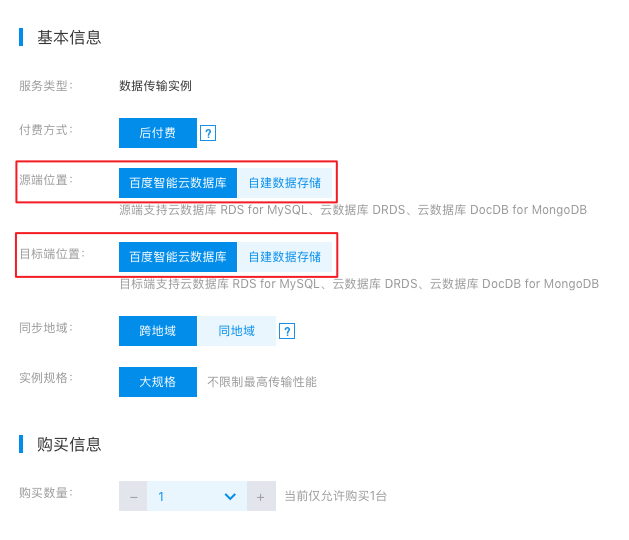
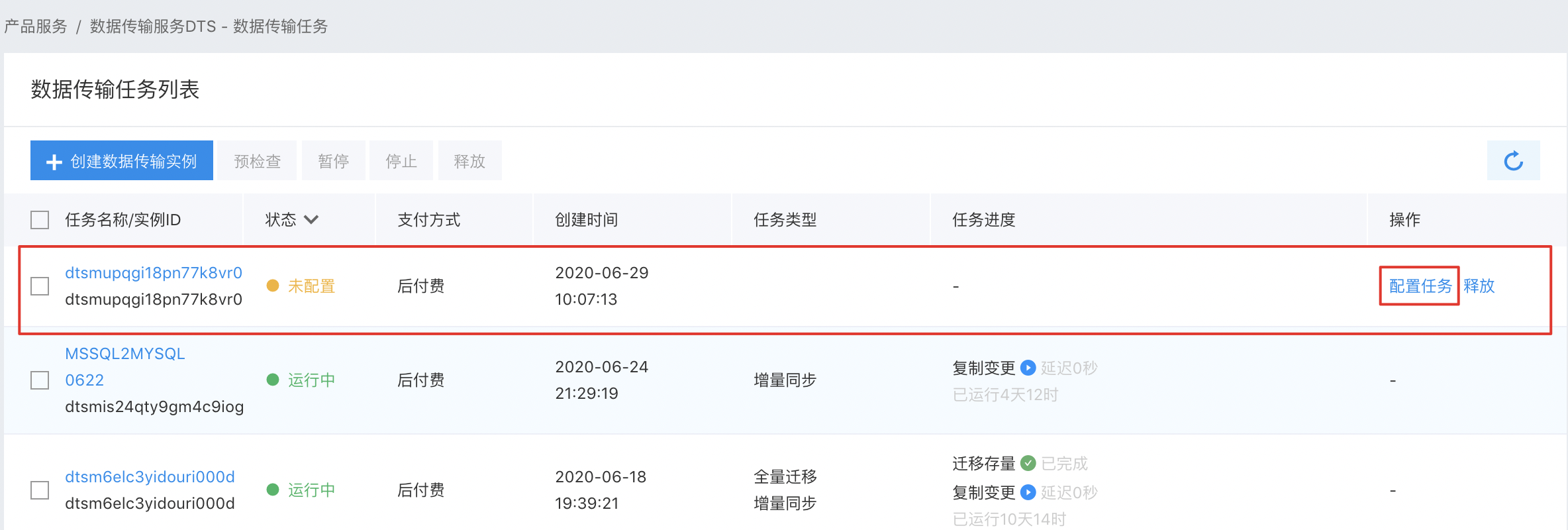
2. Configure a task
First, enter the task connection configuration page. The following example takes the self-built data storage as the source and the destination as Baidu AI Cloud Database for configuration.
Configure the source as a Redis self-built data storage instance. Select the self-built access type corresponding to the source, such as self-built Redis storage in the public network.
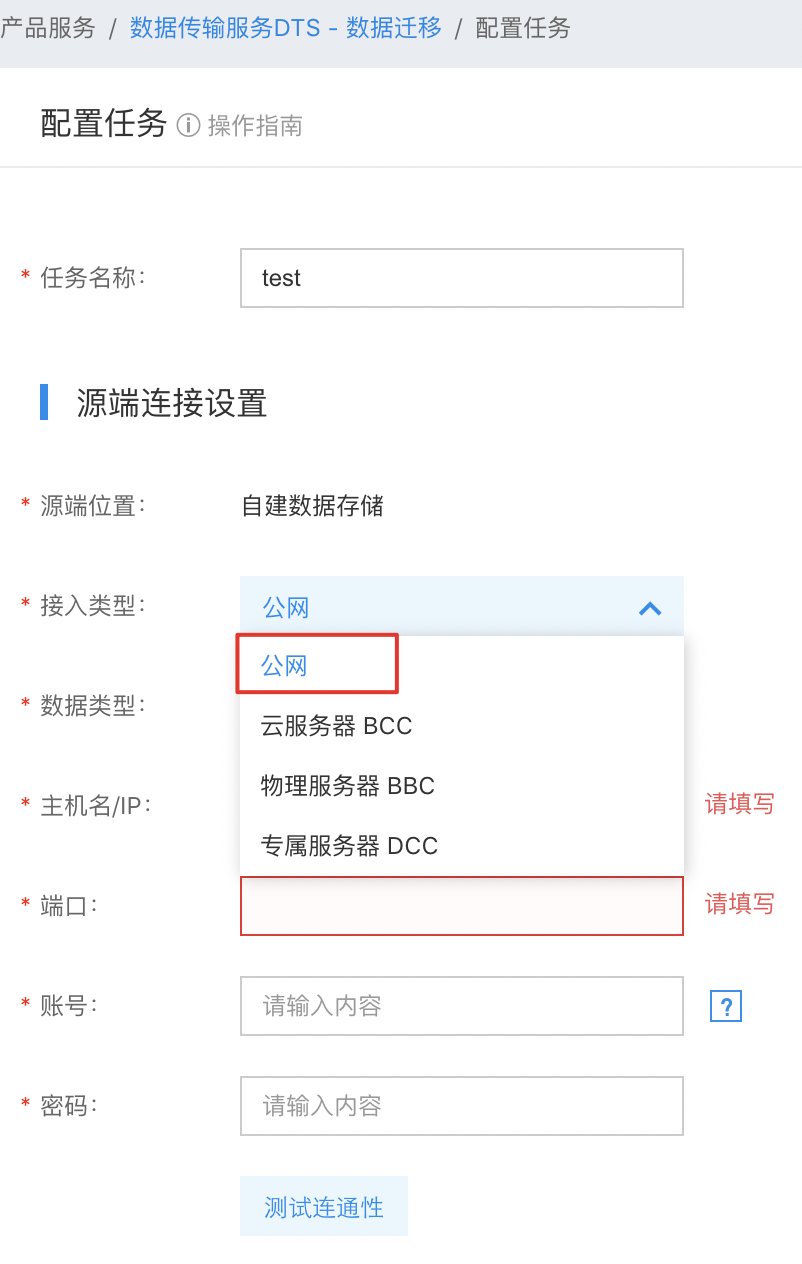
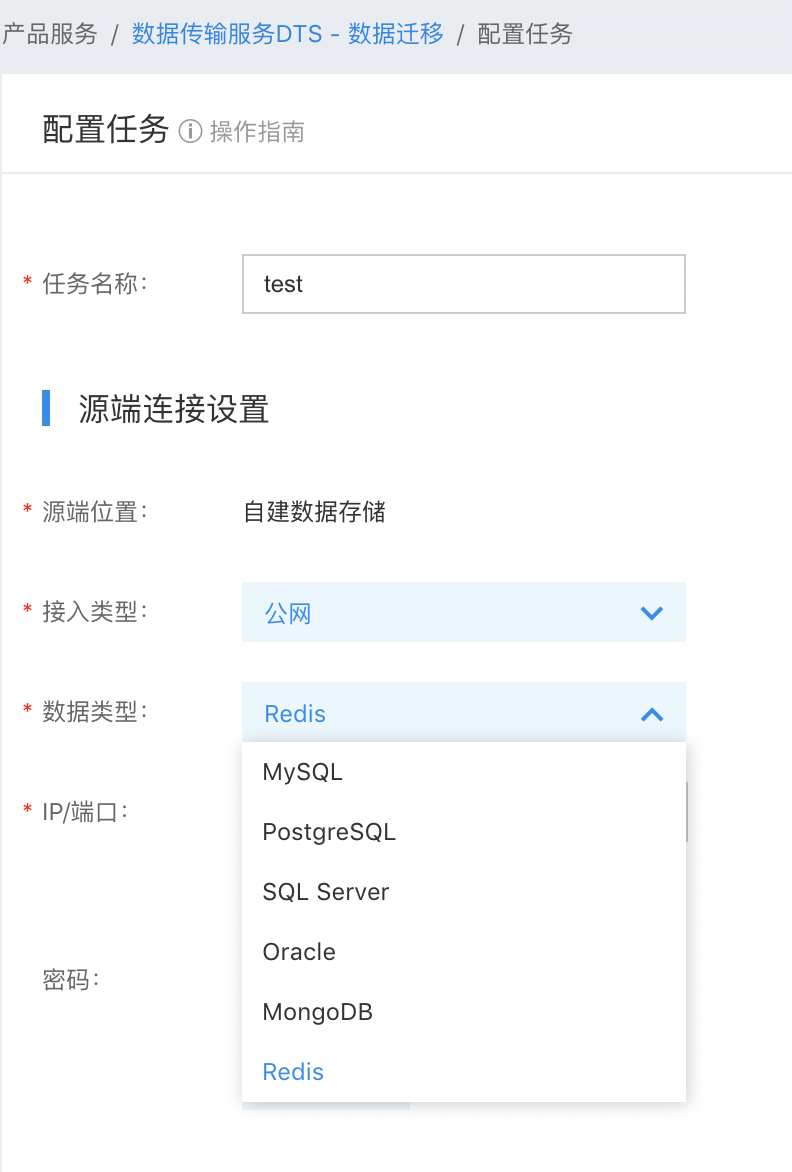


Click the [Authorize Whitelist and Enter Next Step] button and select the incremental migration as the migration type. The Redis-to-Redis migration supports instance-level incremental migration, including full synchronization and incremental synchronization.
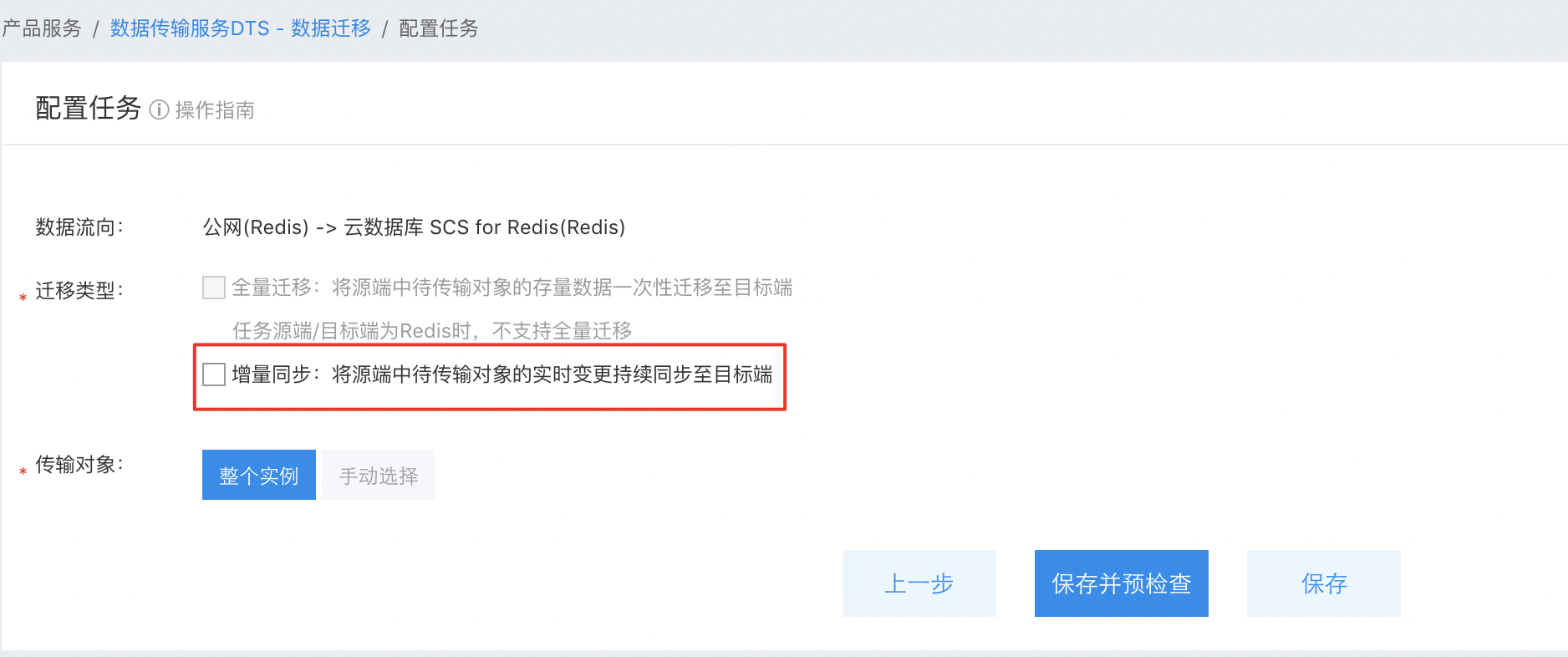
After you select the migration type, you can click the [Save and pre-check] button to save the configuration and perform the pre-check, or click the [Save] button to save the configuration.
3. Start migration
After you save the configuration, you can start the pre-check on the task list page. If you click the [Save and pre-check] button when you save the configuration task, you do not need to perform the pre-check again.

If the pre-check fails, you can check the relevant configuration according to the error prompt. If the configuration is incorrect, you can reconfigure it.
After the pre-check is successful, you can start the task.

